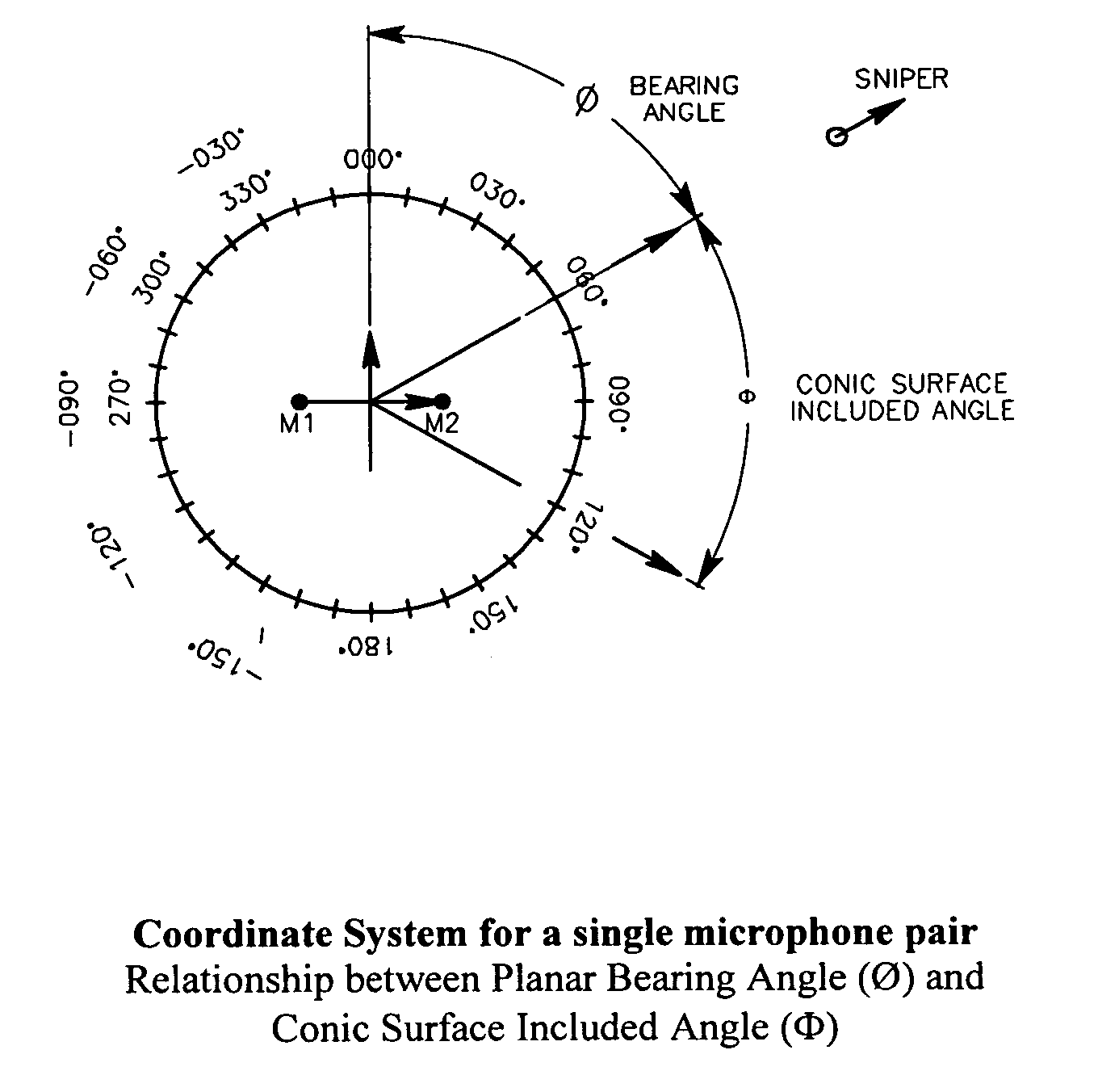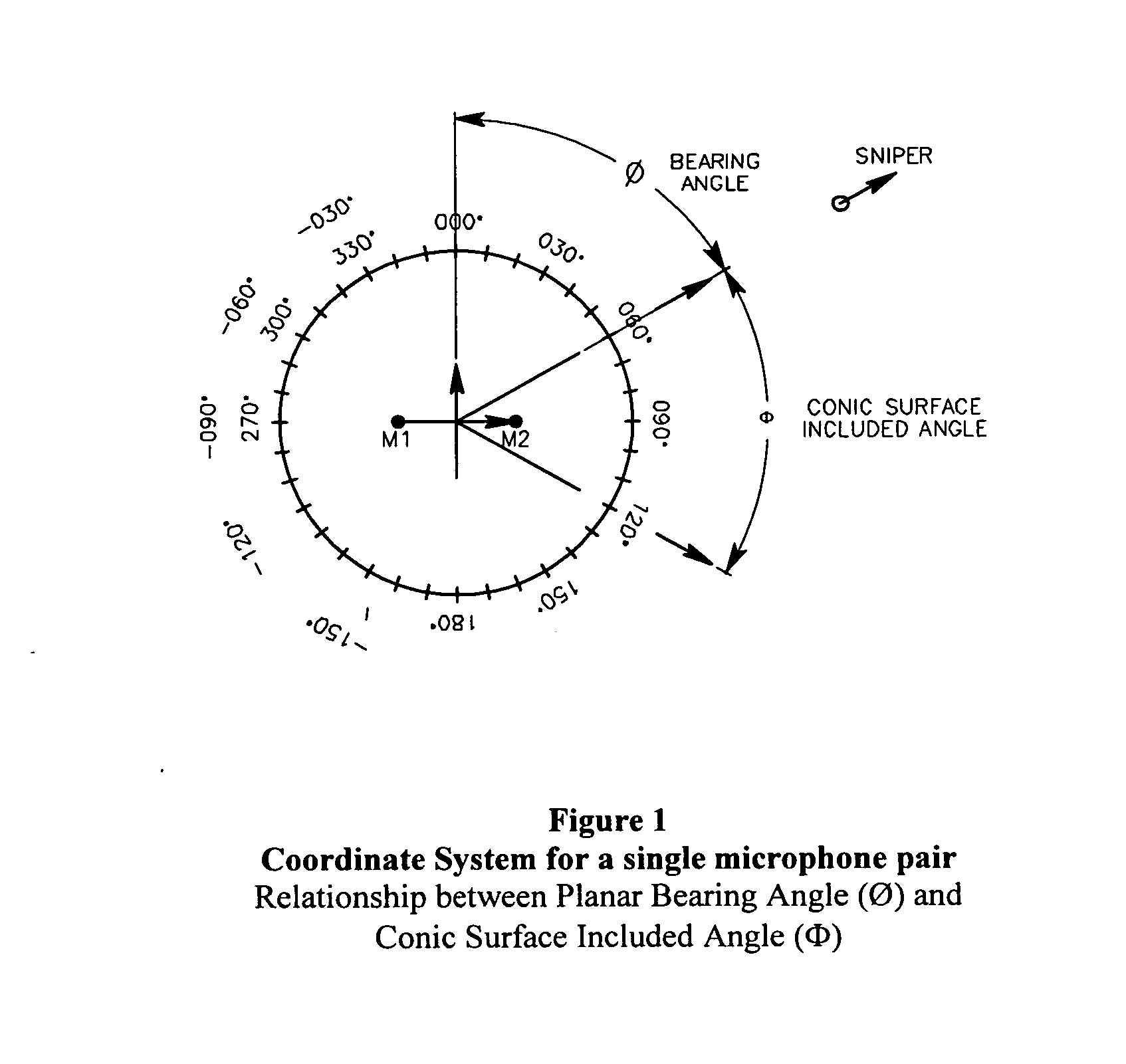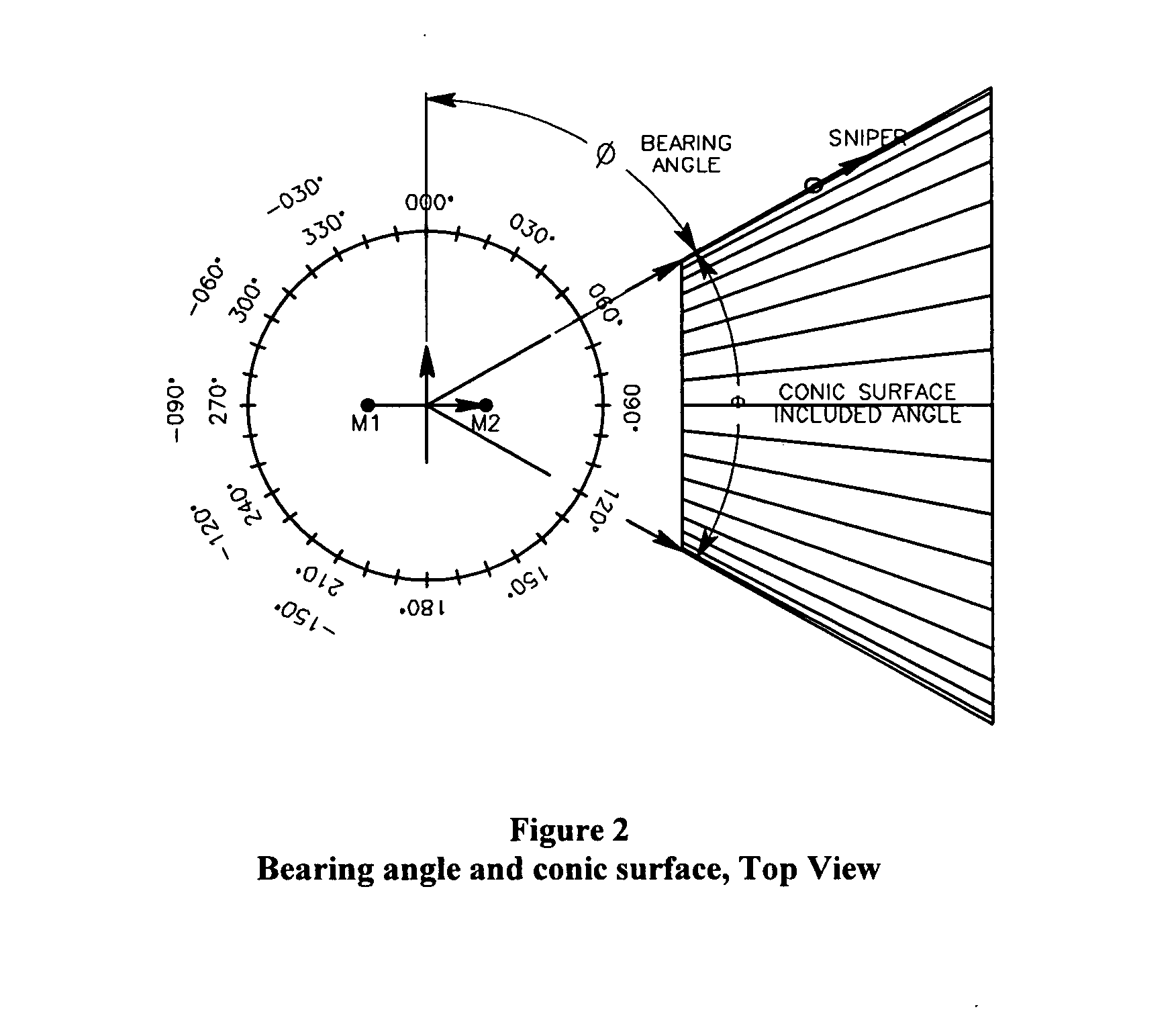By bouncing the
laser off of the bulletfrom multiple locations, the bullet's location in space may becalculated (with limited accuracy).
Since the
shock wave is continuously generated as the bullet moves through space, it is computationally very intensive to reconstruct the
projectile's path.
Disadvantages:This system does not determine the origin of the sound.
It can be appreciated that small errors in the measurement of the successive positions can result in a very large error in the calculated trajectory.The calculated trajectory of the bullet does not determine the bullet's origin.
For this reason, shockwave systems are frequently combined with other systems to assist in determining the actual origin of the bullet.This system can be defeated by using a silencer on the
rifle, since silencers drop the speed of even
high velocity bullets below Mach 1.Supersonic bullets will no longer be detected if they drop below Mach 1 during flight.It is expensive.It is not very portable.
Most systems are vehicle mounted.It uses considerable amounts of power, and is not well suited to battery operation.It requires timing accuracies on the order of microseconds or better to achieve reasonable accuracy.
The system is not inherently omnidirectional, and currently available systems have only 120° fields of view, leaving ⅔ of the surrounding unmonitored and therefore undefended.This system only provides
relative bearing and
azimuth information.
This can be supplemented with a
laser range-finder, but this adds complexity to the overall system.This system can be spoofed by glints and reflections.This system is generally bulky, complex, power consuming and expensive.
The active
laser detection system is a complex, expensive and rather desperate method of protecting limited volumes of space for limited amounts of time.
Disadvantages:This system must flood a suspected volume of space with an extremely high speed, raster scanning laser.This system and operator must have some knowledge of likely sources of sniper fire in order to protect the correct space.Multiple detectors must surround the protected space.The probability of obtaining a sufficient number of reflections off of a bullet to allow the calculation of a trajectory is very low in typical combat conditions.This system suffers the same accuracy problems that all trigonometric and
triangulation systems suffer.This system is not amenable for use in mobile applications.This system is bulky, expensive, and draws large amounts of power.
Some of the trajectory calculating systems are subject to large errors in the point of origin due to relatively small errors in the calculation of the bullet's successive position in space.
DisadvantagesThese systems are bulky, expensive and power drains.These systems suffer mobility and power limitations worse than its least mobile and most power hungry component.Competitive manufacturers must cooperate to cross-
license technology.Complexity is the enemy of reliability.
It is easy to see that, if the bearing angle is greater than 70°, any effect that introduces small errors into the timing signals (such as ambient winds) will also introduce large errors into the calculated bearing angle.
It is evident that even small bearing errors can result in large positional errors when they are projected out long distances.
Table 3 below demonstrates how relatively modest bearing errors result in large positional errors when they are projected out long distances.
The significant consequence of this analysis is that slight errors in the calculated bearing angle result in large positional errors when 1) the bearing angles are in the imprecise zones between 70°<Ø<90° and 2) those bearing errors are projected out the long distances that typically separate a sniper from a sniper
detector.
However the problem of the errors associated with high bearing angles (Ø>70°) does not go away with crossed pairs of microphones.
In fact, the problem is made worse.
 Login to View More
Login to View More  Login to View More
Login to View More 


